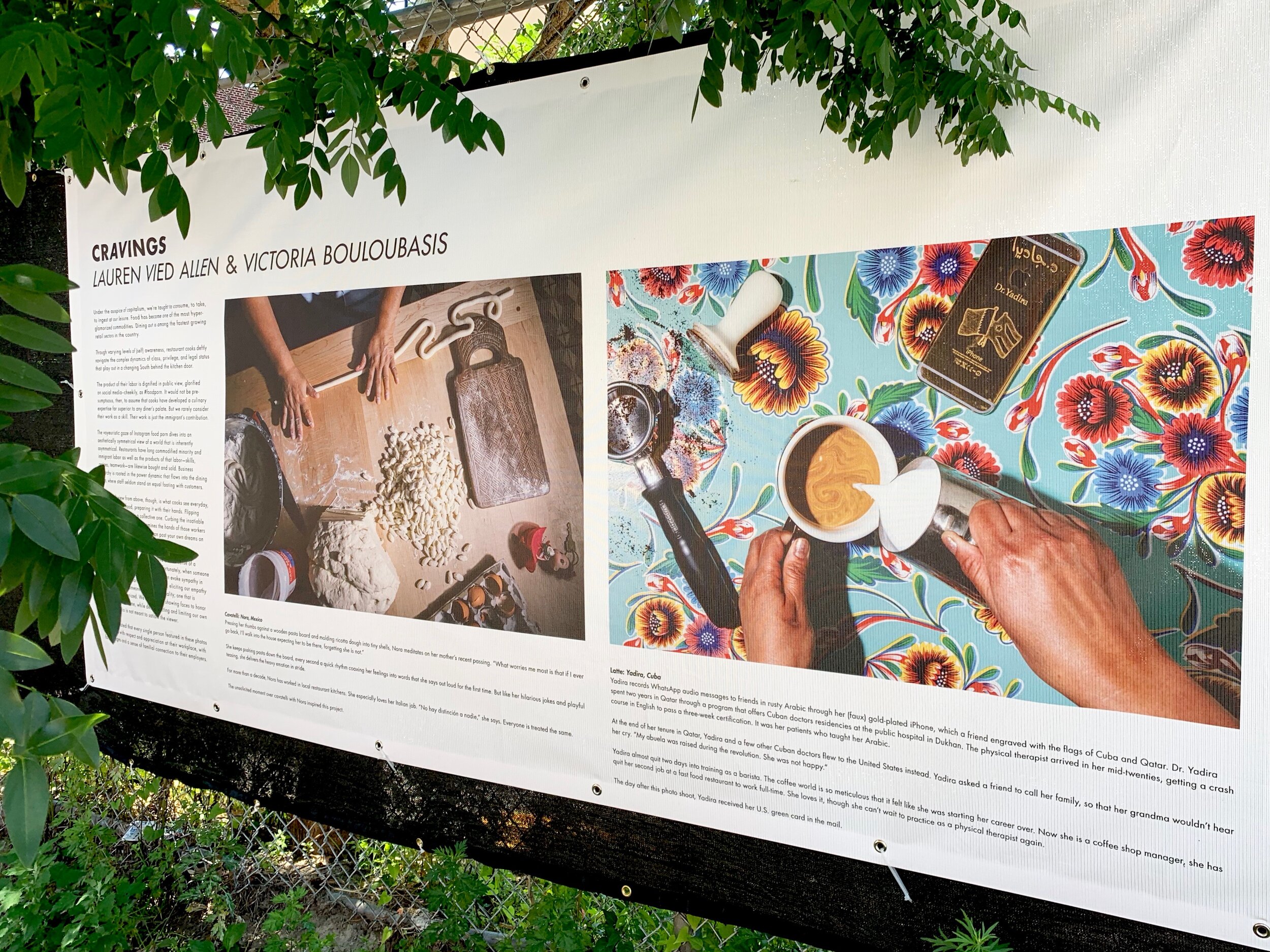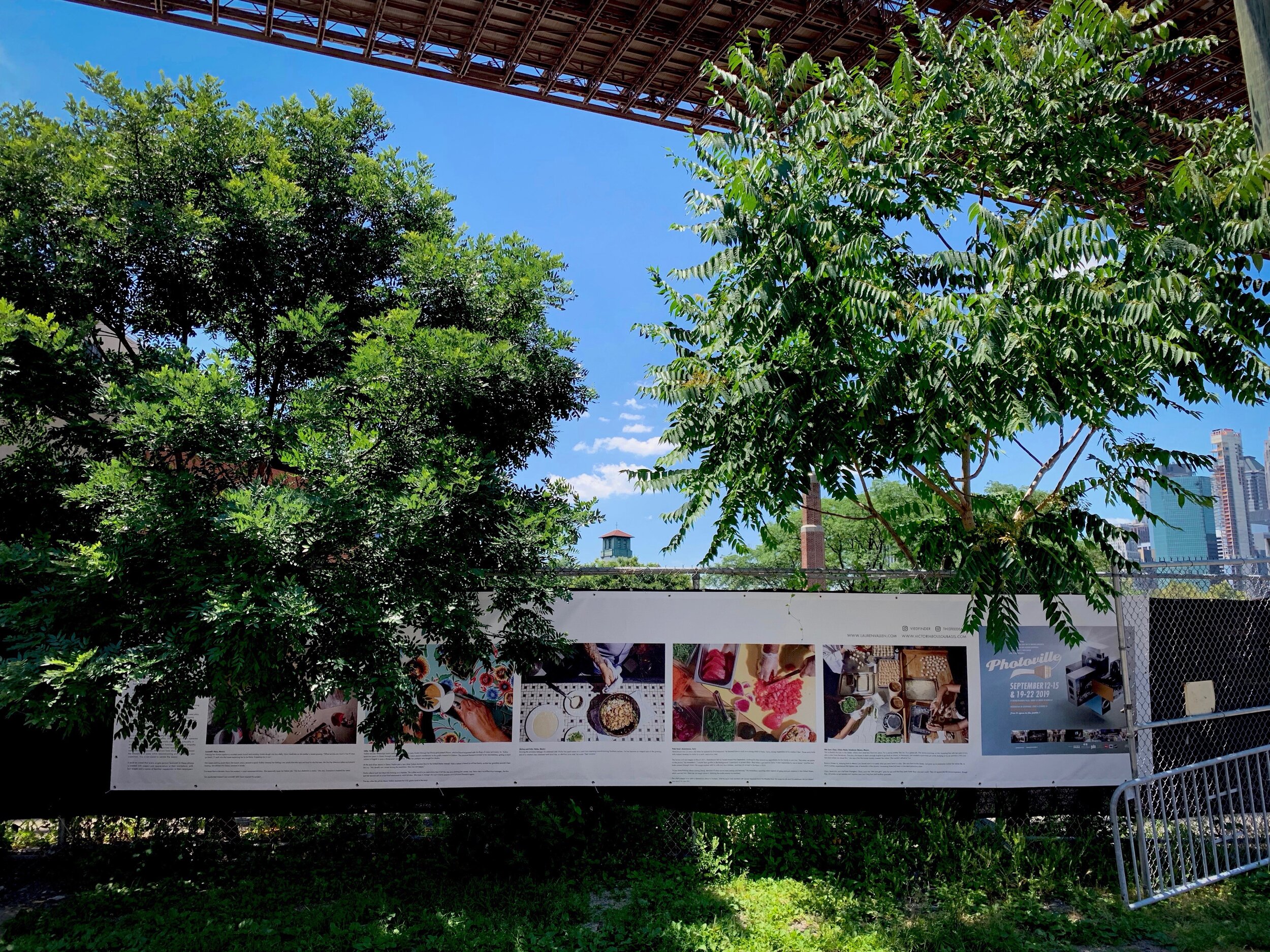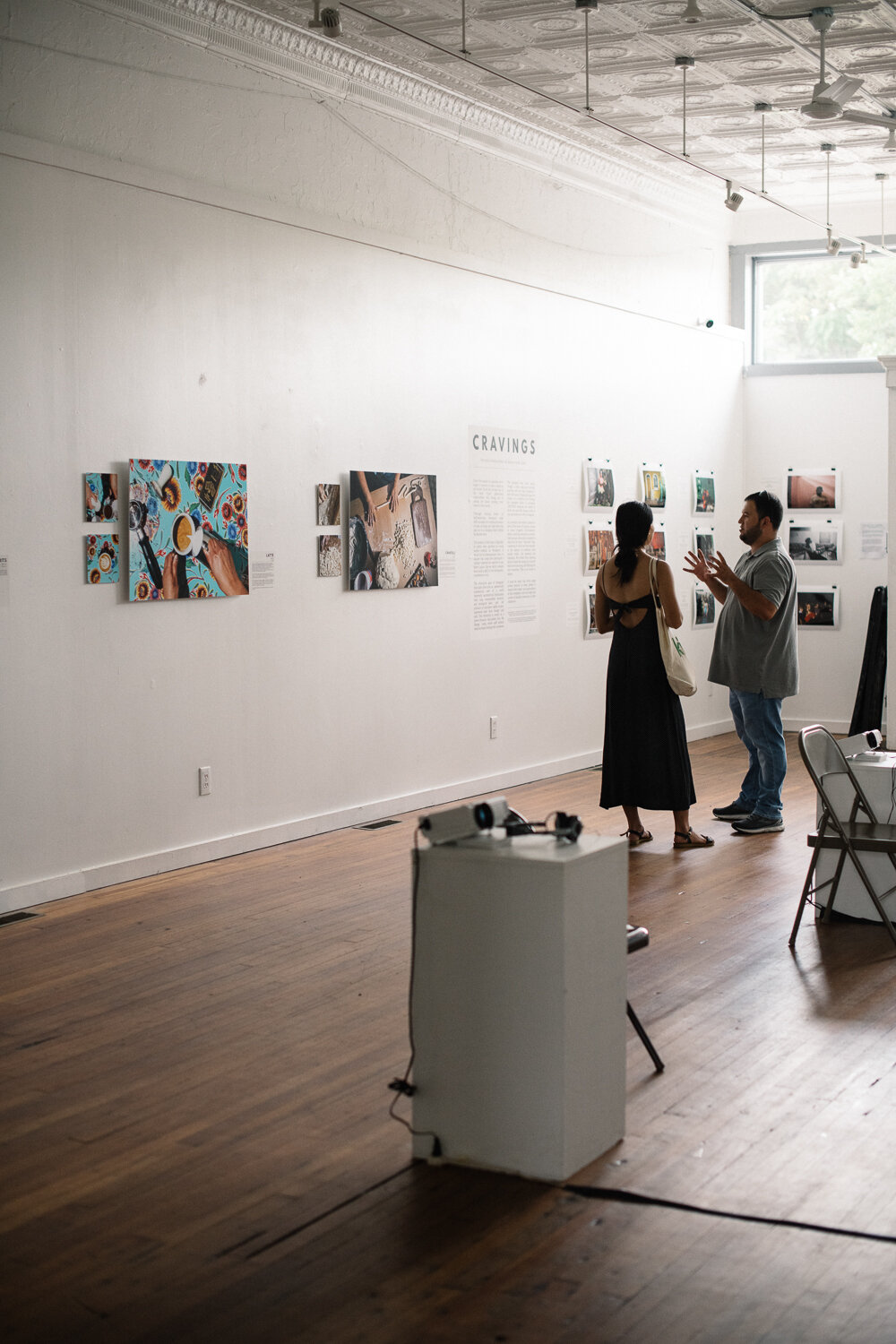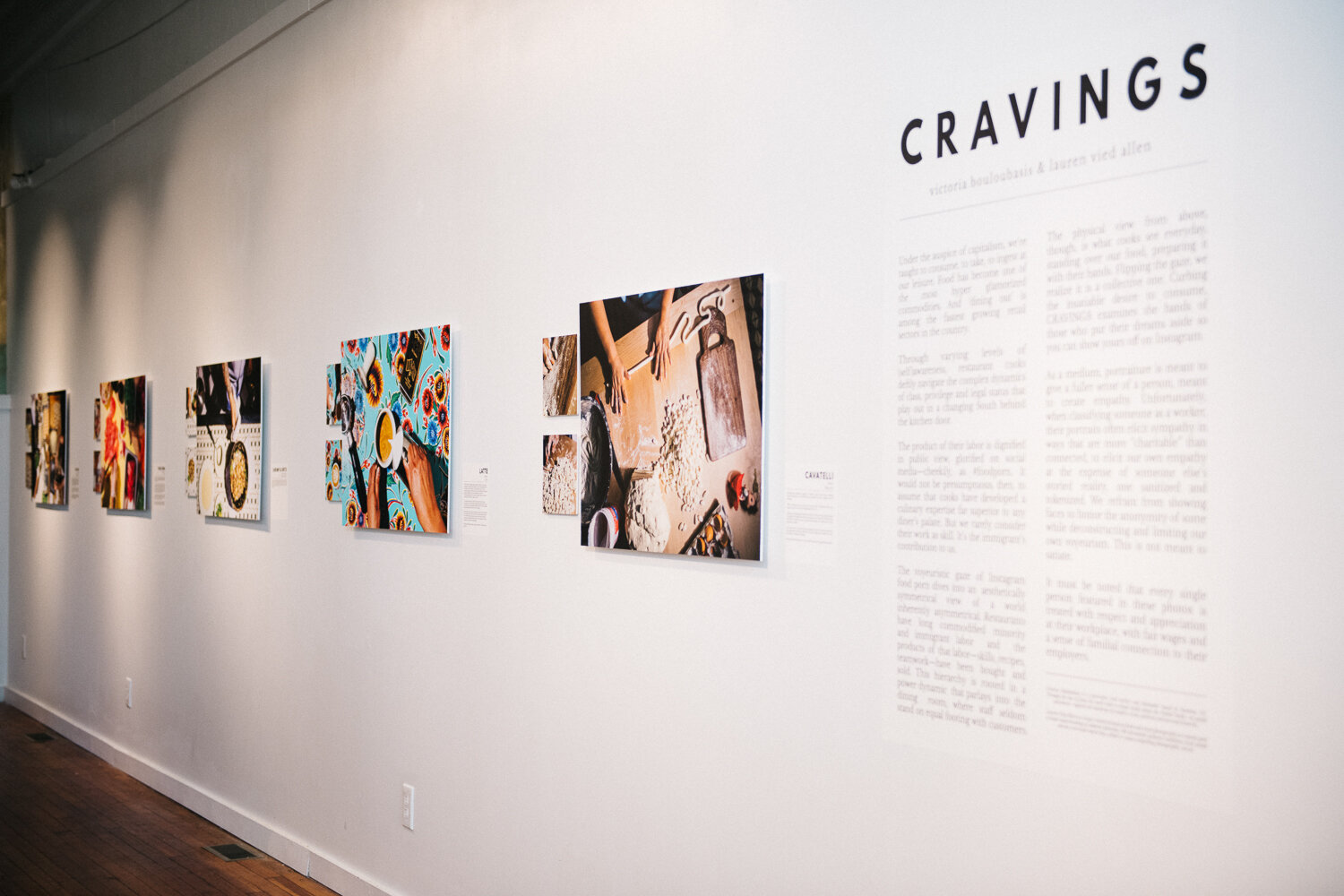CRAVINGS
WORDS BY VICTORIA BOULOUBASIS
PHOTOS BY LAUREN V. ALLEN
National Winner in 2019-The Fence by Photoville
Shown at The Carrack in Durham, NC, 2019
CAVATELLI
NORA, MEXICO
Pressing her thumbs against a wooden pasta board and molding ricotta-dough into tiny shells, Nora meditates on her mother’s recent passing.
“What worries me most is that if I ever go back, I’ll walk into the house expecting her to be there, forgetting she is not.”
She keeps pushing pasta down the board, every second a quick rhythm coaxing her feelings into words that she says out loud for the first time. But like her hilarious jokes and playful teasing, she delivers the heavy emotion in stride.
For more than a decade, Nora has worked in local restaurant kitchens. She especially loves her Italian job. "No hay distinción a nadie," she says. Everyone is treated the same.
The unsolicited moment over cavatelli with Nora inspired this project.
Curbing the insatiable desire to consume, CRAVINGS examines the hands of those who put their dreams aside so you can show yours off on Instagram.
Under the auspice of capitalism, we’re taught to consume, to take, to ingest at our leisure. Food has become one of the most hyper glamorized commodities. And ‘dining out’ is among the fastest growing retail sectors in the country.
Through varying levels of (self)awareness, restaurant cooks deftly navigate the complex dynamics of class, privilege and legal status that play out in a changing South behind the kitchen door.
The product of their labor is dignified in public view, glorified on social media--cheekily, as #foodporn. It would not be presumptuous, then, to assume that cooks have developed a culinary expertise far superior to any diner’s palate. But we rarely consider their work as skill. It’s the immigrant’s contribution to us.
The voyeuristic gaze of Instagram food porn dives into an aesthetically symmetrical view of a world inherently asymmetrical. Restaurants have long commodified minority and immigrant labor and the products of that labor—skills, recipes, teamwork—have been bought and sold. This hierarchy is rooted in a power dynamic that parlays into the dining room, where staff seldom stand on equal footing with customers.
The physical view from above, though, is what cooks see everyday, standing over our food, preparing it with their hands. Flipping the gaze, we realize it is a collective one. Curbing the insatiable desire to consume, CRAVINGS examines the hands of those who put their dreams aside so you can show yours off on Instagram.
As a medium, portraiture is meant to give a fuller sense of a person, meant to create empathy. Unfortunately, when classifying someone as a worker, their portraits often elicit sympathy in ways that are more “charitable” than connected, to elicit our own empathy at the expense of someone else’s storied reality, one sanitized and tokenized. We refrain from showing faces to honor the anonymity of some while deconstructing and limiting our own voyeurism. This is not meant to satiate.
It must be noted that every single person featured in these photos is treated with respect and appreciation at their workplace, with fair wages and a sense of familial connection to their employers.
SHRIMP AND GRITS
NICHO, MEXICO
HECTOR, MEXICO
Earning the enviable tutelage of a beloved chef, Nicho and Hector have spent years on a cook line preparing award-winning Southern recipes. They have become an integral part of the growing sect of a creative class obsessed with food. But, as chef has once said, his cooks "feel invisible."
LATTE
YADIRA, CUBA
Yadira records Whatsapp audio messages to friends in rusty Arabic through her (faux) gold-plated iPhone, which a friend engraved with the flags of Cuba and Qatar. Dr. Yadira spent two years in Qatar through a program that offers Cuban doctors residencies at the public hospital in Dukhan. The physical therapist arrived in her mid-twenties, getting a crash course in English to pass a three-week certification. It was her patients who taught her Arabic.
At the end of her tenure in Qatar, Yadira and a few other Cuban doctors flew to the United States instead. Yadira asked a friend to call her family, so that her grandma wouldn’t hear her cry. “My abuela was raised during the revolution. She was not happy.”
Yadira almost quit two days into training as a barista. The coffee world is so meticulous that it felt like she was starting her career over. Now she’s a coffee shop manager, and quit her second job at a fast food restaurant to work there full-time. She loves it, though she can’t wait to practice as a physical therapist again.
The day after this photo shoot, Yadira received her U.S. green card in the mail.
DIM SUM
CHUN, CHINA
PAOLA, HONDURAS
BIANCA, MEXICO
This is Paola’s first job in the States, where she’s lived less than two years. For a young mother like her, it’s a great job. She works mornings on the dumpling line with her sister-in-law, who is also from Honduras. One day she hopes to learn enough English to go back to school. In Honduras, she worked a part-time job while studying to be an architect. (“No one has ever asked me about this,” she says.) But the money barely covered her tuition. She couldn’t afford to live.
Bianca chimes in, relaying how in Mexico you barely earn in a week what you can earn here in a day. She was born in the States, but grew up in oceanside Colima her entire life. In 2017, Colima experienced the highest rate of homicide in the country, increasing three-fold even as the least populous state.
Chun, head dim sum chef from Shanghai, China, says her “dim sum girls” give her joy and that they work faster than she ever could. They all appreciate the encouragement, though still prefer to eat tamales and tajadas over xiao long bao and scallion pancake.
POKÉ BOWL
ABDULMOUIN, SYRIA
Abdulmouin was 22 years old when he opened his first restaurant. He learned how to cook as a young child in Homs, Syria, dicing vegetables at his mother’s feet. Those early knife skills helped develop his niche as a swift, meticulous chef.
The Syrian civil war began in March 2011. Abdulmouin left for Saudi Arabia that September, cooking his way toward an opportunity for his family to join him. "But when we spoke on the phone," he remembers, "I would hear gunfire in the background. I went back to protect them. And when I got back to Syria, it was impossible for me to leave." Live fire and tanks plowed through Homs. He sought asylum with his wife and four children, and they all arrived to Durham in 2016.
"It was hard thinking about coming [here], because of what we've been seeing and hearing.” He remembers watching news reports of gang and gun violence in the United States, which worried him. Now he can laugh about it, blaming the mafia movies he watched.
The chef’s dream is to open a shawarma place in Durham, with his home spice rack stacked with spices imported from the Middle East. He loves his job and his employer--he just doesn’t care much for raw fish.












